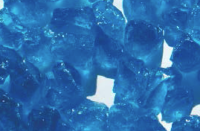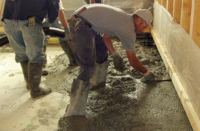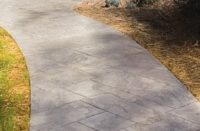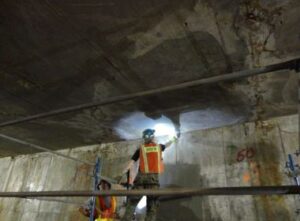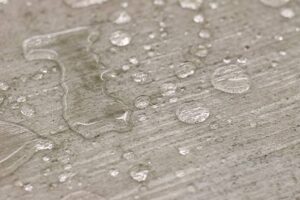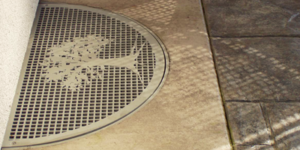
Water is the enemy of decorative concrete. And the water can come from anywhere. Most often, it comes from irrigation sprinklers that are installed well after the concrete contractor is done. And sure enough, the contractor has to return to fix a drainage problem that didn’t exist when the decorative concrete work was finished.
“The number one problem with decorative concrete is moisture,” says Doug Carlton, president of Carlton Concrete in Visalia, Calif. “The moisture can come from drainage, potted plants, roof drains or sealing too soon. The most likely source of moisture is irrigation sprinklers.”
Drainage is a problem that has to be addressed as part of the decorative concrete plan. “As soon as you pour a slab you’re creating a drainage issue — you’re creating something that will pool or puddle,” says Mark Armstrong, president of Iron Age Designs in Burien, Wash. “You also have to create a slope so the water goes where you want it to.”
With decorative concrete, the drain becomes part of the design and decor. It has to serve both a functional and aesthetic role. “Where you put the drain makes a big difference,” says Dave Pettigrew, owner of Diamond D Concrete in Capitola, Calif. “You don’t want a drain in the middle of the walkway. You want the water out of the path of travel.”
In addition to function and appearance, drainage decisions also have to account for local codes and environmental regulations. “Today it’s important for the drainage to be eco-friendly,” says Armstrong. “There are green building initiatives and erosion control issues. These issues are getting built into city codes so the water drainage doesn’t lead into streams or the ocean.”
Drainage decisions can have a large impact on the design elements in decorative concrete. The first impulse is to choose a drainage solution that hides or minimizes the drain. “Drainage doesn’t matter as much at a loading dock or a car wash, but when you have decorative concrete, the drain becomes a necessary evil that has to be minimized and de-emphasized,” says Armstrong.
But Armstrong also believes you can make the drain a proud part of the decorative concrete design.
“You can have a drain that serves the function and turns out being an upgrade like any quality upgrade,” says Armstrong. “It’s like choosing quality faucets — it’s a subtle way to beautify your environment and add decorative trim.”
One of the major choices in drainage is the spot drain vs. the trench drain. The spot drain is less conspicuous but requires complicated sloping. “A lot of people will choose their design based on the use of a spot drain rather than a trench drain,” says Armstrong. “With a spot drain you have to build four slopes for one drain as opposed to creating two slopes for the trench drain.”
Since the trench drain only requires two slopes, there is less danger of standing water, says Leslie Pickering, marketing manager at drain manufacturer ACO Polymer Products Inc. in Chardon, Ohio. “Catch basins require a low-point slope with complex grading so it often doesn’t work to remove standing water,”
One very discrete drainage solution is pervious concrete. There’s no drain and no sloping worries. However, many contractors are skeptical that pervious concrete will remain porous year after year. “Pervious concrete looks good on paper, but I can’t imagine it will work for years,” says Pettigrew. “What happens is that tire rubber and leaves get into the tiny pores over the years. And you can’t pressure-wash it when it’s four inches thick.”
Another solution that requires no obvious drain is slotted brick. Sloping is still required, but there’s no drain. “Brick slot is an option. This product creates a small slot in the surface where the water will drain through,” says Pickering. “It’s very discreet. You will get drainage without having to see the drain.”
Ultimately, the decorative concrete contractor needs to work with the customer to solve drainage issues that might show up well after the job is finished. Sprinkler systems can produce drainage problems that can’t be anticipated at the time the concrete work is complete. “Education, as usual, is the best solution to eliminating the risk of sealer breakdown,” says Carlton. “Everyone involved needs to understand why it is important to control all water away from the surface and edges of the decorative work.”
Drains explained: Different Options for Diffferent Jobs
Center drain: It’s discrete and it keeps water from pooling, but it requires four slopes.
Trench drain: Only requires two slopes. This drain is more conspicuous than a center drain, but it’s the drain preferred by contractors because the sloping is more manageable.
Pervious concrete: The water drains through the concrete, which is the best solution visually. This works well at first, but over time surface debris and mold can clog the pores and block drainage. This is the solution contractors often prefer least.
Slotted concrete: Slots on the concrete surface allow water to drain. This is a very discreet solution, but it still requires slopes.
